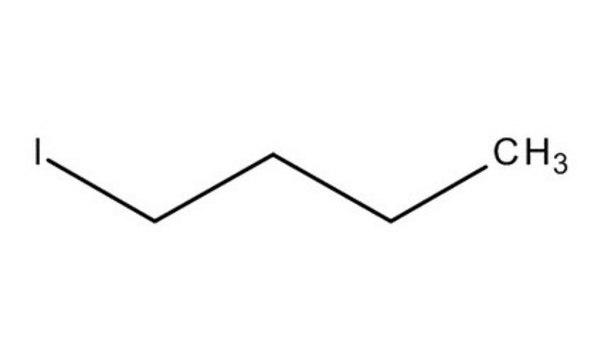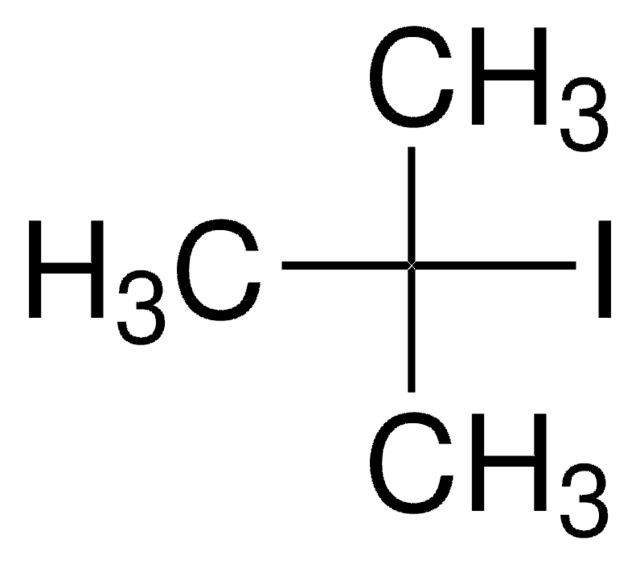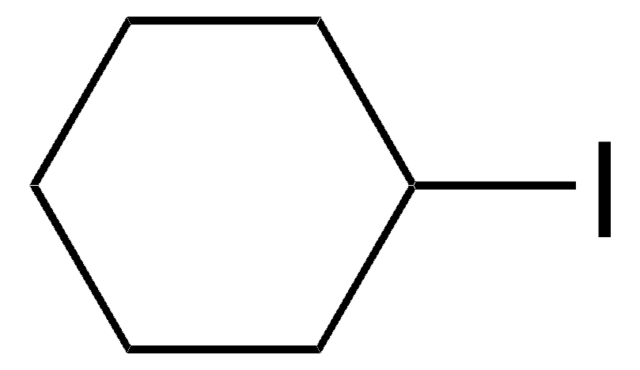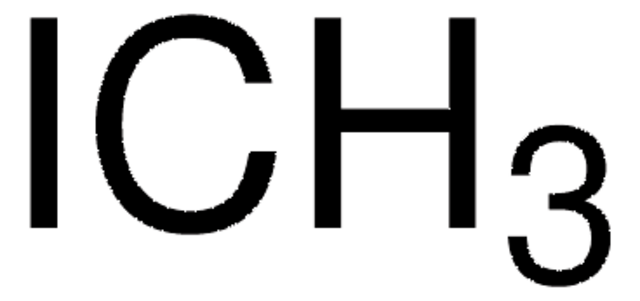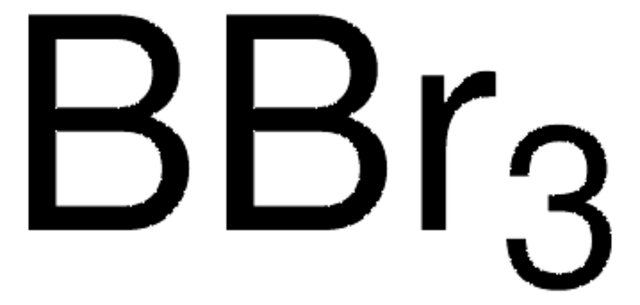244325
2-Iodobutane
≥98%, contains copper as stabilizer
Recommended Products
Quality Level
Assay
≥98%
form
liquid
contains
copper as stabilizer
refractive index
n20/D 1.499 (lit.)
bp
119-120 °C (lit.)
mp
−104 °C (lit.)
solubility
alcohol: soluble(lit.)
diethyl ether: soluble(lit.)
water: insoluble(lit.)
density
1.598 g/mL at 25 °C (lit.)
SMILES string
CCC(C)I
InChI
1S/C4H9I/c1-3-4(2)5/h4H,3H2,1-2H3
InChI key
IQRUSQUYPCHEKN-UHFFFAOYSA-N
Looking for similar products? Visit Product Comparison Guide
Related Categories
General description
accessory
Signal Word
Warning
Hazard Statements
Precautionary Statements
Hazard Classifications
Flam. Liq. 3
WGK
WGK 3
Flash Point(F)
75.2 °F
Flash Point(C)
24 °C
Personal Protective Equipment
Regulatory Information
Certificates of Analysis (COA)
Search for Certificates of Analysis (COA) by entering the products Lot/Batch Number. Lot and Batch Numbers can be found on a product’s label following the words ‘Lot’ or ‘Batch’.
Already Own This Product?
Find documentation for the products that you have recently purchased in the Document Library.
Our team of scientists has experience in all areas of research including Life Science, Material Science, Chemical Synthesis, Chromatography, Analytical and many others.
Contact Technical Service


